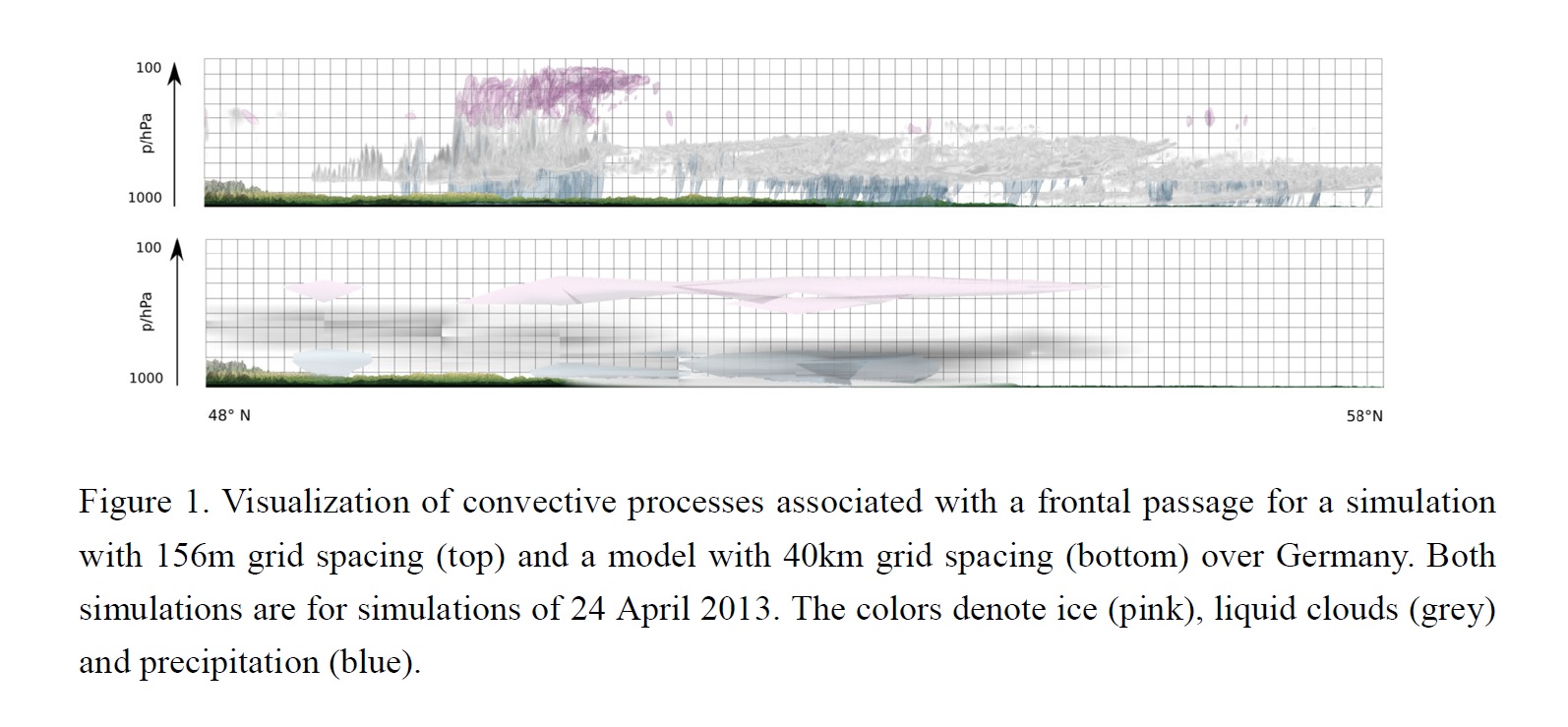Graphical Abstract
Stevens, B., C. Acquistapace, A. Hansen, R. Heinze, C. Klinger, D. Klocke, H. Rybka, W. Schubotz, J. Windmiller, P. Adamidis, I. Arka, V. Barlakas, J. Biercamp, M. Brueck, S. Brune, S. A. Buehler, U. Burkhardt, G. Cioni, M. Costa-Surós, S. Crewell, T. Crüger, H. Deneke, P. Friederichs, C. C. Henken, C. Hohenegger, M. Jacob, F. Jakub, N. Kalthoff, M. Köhler, T. W. van Laar, P. Li, U. Löhnert, A. Macke, N. Madenach, B. Mayer, C. Nam, A. K. Naumann, K. Peters, S. Poll, J. Quaas, N. Röber, N. Rochetin, L. Scheck, V. Schemann, S. Schnitt, A. Seifert, F. Senf, M. Shapkalijevski, C. Simmer, S. Singh, O. Sourdeval, D. Spickermann, J. Strandgren, O. Tessiot, N. Vercauteren, J. Vial, A. Voigt, and G. Zängl, 2020: The added value of large-eddy and storm-resolving models for simulating clouds and precipitation. J. Meteor. Soc. Japan, 98, 395-435.
Special Edition on DYAMOND: The DYnamics of the Atmospheric general circulation Modeled On Non-hydrostatic Domains
https://doi.org/10.2151/jmsj.2020-021
Graphical Abstract
JMSJ Editor's Highlight
JMSJ Awards 2020
Plain Language Summary: This study investigates, if atmospheric models with horizontal resolutions of 100 m to 2 km are able to better simulate key features, like clouds and precipitation, of the climate system than currently used models employing much coarser resolution and parameterized convection. Precipitation characteristics are much more realistic in the simulations with explicitly convection, already at kilometer resolutions. Increasing resolution to hectometer scales improves the simulation of precipitation only modestly, but substantially improves the simulation of clouds. The results suggest that new climate models, which explicitly resolve convection and the interaction with its environment, offer exciting opportunities to learn about the climate system.
Highlights:
- In almost every respect, the representation of the vertical motion leads to an improved, and more physical, representation of clouds and precipitation as compared to models using parameterizations to represent clouds and convective processes.
- Most improvements for precipitations statistics are already achieved at kilometer scale resolutions, compared to models using parameterized convection.
- The representation of clouds improves further, when increasing resolutions to hectometer scales.







